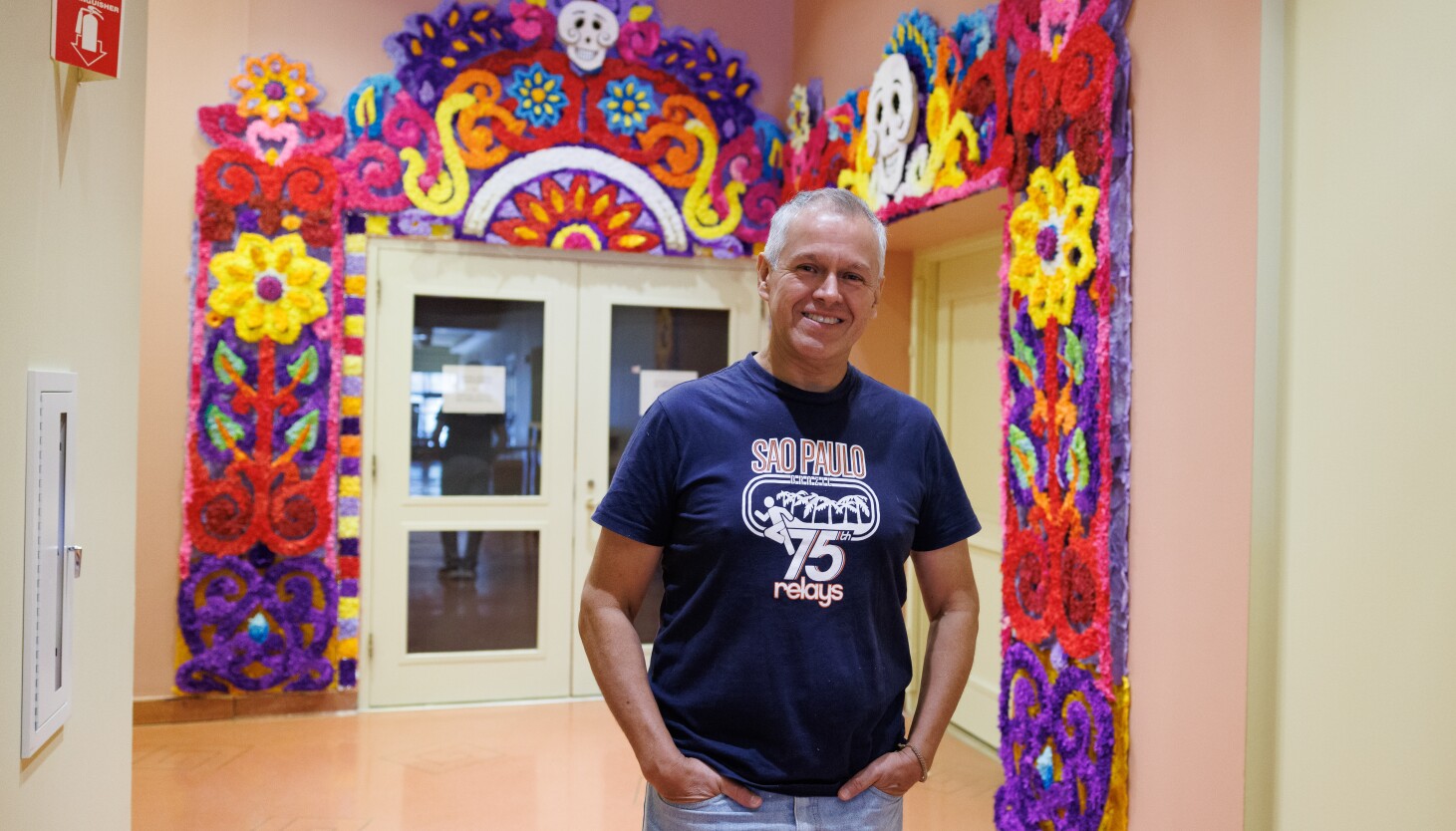El mejor lugar para cobertura de noticias y cultura latina en Chicago. | The place for coverage of Latino news and culture in Chicago.
In Chicago, the Day of the Dead is celebrated over more than just two days.
The holiday, which is Nov. 1 and 2, is the focus of the 38th edition of the National Museum of Mexican Art’s most popular exhibit, titled “Dia de Muertos, Where the Past is Present,” which runs from Sept. 20 to Dec. 8.
“When we talk about the Day of the Dead, for us at the National Museum of Mexican Art, it is an entire season,” emphasized Dolores Mercado, the exhibit’s curator.
More than 110 artists are participating in the exhibit, which includes about 70 pieces from the museum’s permanent collection. Mercado emphasized that it celebrates popular art from generations of Mexican artists from all over the country and the world.
“They have given us their point of view, their way of thinking, their knowledge captured in the materials of their region. It is very important to give them this space because popular art is what is considered the art of the people,” she said.
A decorative arch at the entrance, similar to the one placed on the doors of churches and cemeteries in Mexico, greets visitors at the main gallery. It was created by artist Alejandro García Nelo, who is from the state of Mexico.
The main installation, a sand mat, resembles the traditional ones that in places like Oaxaca, are a way to say goodbye to a deceased loved one.
Oaxacan artist Fulgencio Lazo, who lives in Seattle, created a sand mat that is 31 feet by 4 feet. Lazo, who is also an engraver and painter, additionally created some woodcuts installed on the wall that would complete his Day of the Dead offering.
Carina Yépez, who honors the memory of her cousin by quilting, was born and raised in Chicago by parents from La Haciendita, Ocampo, Guanajuato. Yépez is participating for the third time in the Day of the Dead exhibition.
“The beautiful thing about this tradition that the museum taught me since I was a child and I visited is that it gives us the opportunity to heal through art and create something with our hands,” said the artist.
Yépez will also teach a quilting workshop at the Museum on Saturdays in October from noon to 3 p.m., where students will use a skull template to create an 11-inch by 17-inch quilt. This workshop is presented in conjunction with the group “Puntadas del alma,” which has been meeting at the Museum for 14 years and was started by Mercado precisely because of an exhibition.
“The class began meeting twice a month over three years and then became so popular that they meet here every Saturday,” she said. “They are women of all ages who come to work together, learn, and who are also telling us stories from their community and personal stories through the quilts, which have become a way to reinterpret past embroidery traditions and make impressive works.”
A tribute to Ray Patlán
The exhibition is also dedicated to local artist Ray Patlán (1946-2024), a Chicano muralist and painter from Pilsen who died in April. To conclude the exhibition, a mural dedicated to Patlán — created by the artist and Pilsen muralist Héctor Duarte, from Caurio, Michoacán — will be on display.
“Ray Patlán was an integral part of the Chicano movement,” said Mercado. It was Patlán who painted the main murals of the Casa Aztlán community center in Pilsen, founded in 1970 as a “Salón de la raza” and the exterior of the building that is now an apartment complex in the neighborhood; its façade was restored by Patlán and Duarte in 2017 after a new developer erased it.
“He and Patlán were good friends; they studied together in David Alfaro Siqueiros’ workshop in Mexico and there was a connection,” she explained.
Duarte pays tribute to the man he considers “the guerrilla fighter of muralism in Chicago,” because he was a promoter of art and always motivated young people to enter that world.
“I emphasize the idea of the first mural that was painted on the façade of Casa Aztlán [with] hummingbirds and monarch butterflies,” Duarte said, explaining that in Aztec culture, the hummingbird represented warriors who died in battle and returned; the monarch butterflies in his native Michoacán are the representation of souls that return, since their migration coincides with the Day of the Dead.
The post Day of the Dead ‘an entire season’ in Chicago appeared first on Patabook News .



